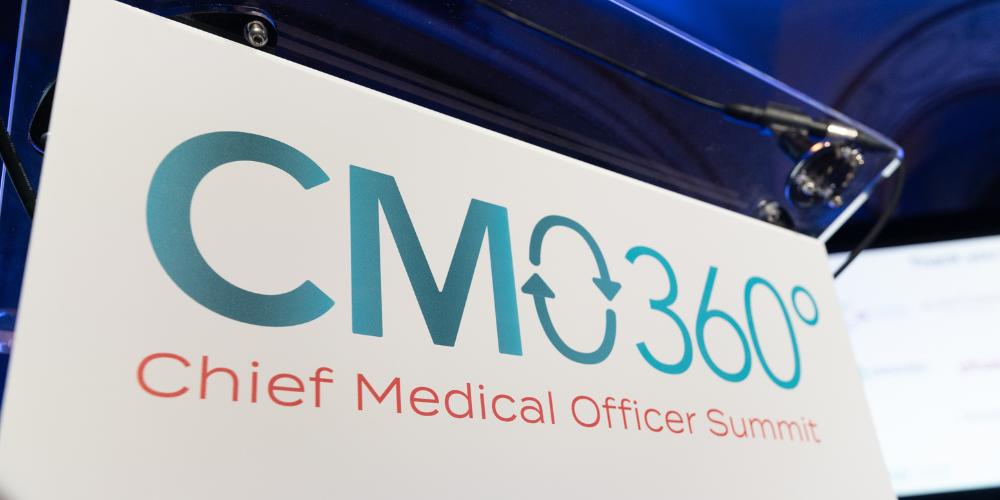
How can you design and execute early phase trials to get the results needed with limited resources and time?
We need to balance what we can do and the resources we have with what needs to be done for a specific drug. We need to design trials that address the specific needs of a particular drug in the shortest amount of time and use a design that will address those needs.
In one of our programs, TCX-101, we have a cell therapy that will be given with allogeneic stem cell transplantation. The patients being enrolled will come on to the trial with active leukemia. However, by the time they receive the drug, they should no longer have active disease at the time of infusion because of the high-intensity conditioning regimen received for stem cell transplantation. For this drug given with transplant, it would be better to get a really early read on safety and then, conduct a larger trial to accrue information on efficacy.
On the other hand, TCX-201 will be given to patients with active disease providing an opportunity to get early information on the efficacy of the drug. For TCX-201, we need to show that the drug actually works so we needed a design that incorporates not only safety, but also efficacy. There are so many drugs currently being trialed in active oncology that getting a drug that is just safe isn’t enough to excite the investigator community. To get physicians to believe in the drug and enroll patients to your clinical trial you need to show a level of efficacy early.
To those ends, we have purpose-built clinical trials based on what the specific compound is expected to do and what data is required to move a compound forward, taking into account the amount of time needed to complete the trial and the resources at our disposal.
How have you set up your clinical trial design for TCX-201 balancing safety and efficacy?
We are using a new design called BOIN12 which is a Bayesian design that combines phase 1 and 2 together. Instead of conducting a 9 to 18-patient phase one trial and then enrolling another 10 to 20 patients for dose expansion, we set up a trial to enroll up to 27 patients and can obtain the information we need enrolling more patients than in a typical phase one, but fewer than if we were recruiting for a phase 1 followed by a phase 2.
The innovative part of this trial design is that you give a score to safety events and efficacy events at each dose level. Then you decide the dose level for the next patients based on the utility score that is calculated based on safety and efficacy events, as measured by dose-limiting toxicities (DLT) and response rates, respectively.
For example, is there responses were observed and there were no DLTs, we would give that dose a score of 100. If there were responses but also DLTs, we would give it a score of 60. If it was safe but had no efficacy, it would get a score of 40. And if there are dose limiting toxicities and no efficacy, it would get a score of 0. Then, we calculate the utility score for each level for any upcoming patient and direct the patients towards a safe and effective dose.
By the end of the clinical trial, we would calculate the final utility score for all dose levels and chose a dose that is safe and one efficacious, basically combining phase 1 and 2 together, this is in the spirit of Project Optimus but, instead of doing things in a serial fashion, you’re doing it in a parallel fashion. This is possible because it’s a cell therapy, and we don’t have to follow the dogma of choosing the highest-tolerable dose.
"We need to look at what we are working with and not just follow the standard path with a phase one trial followed by phase two and three."
How can CMOs better approach dose optimization?
As I mentioned earlier, we need to look at what we are working with and not just follow the standard path with a phase one trial followed by phase two and three. We look at our modality and then design our trials accordingly. Considering that, aside from chemotherapy, there really isn’t much of a dose response curve for cell therapies and immunological treatments, and even small molecule inhibitors, we need to find a dose that is at minimum biologically effective and then generate data on multiple dose levels to determine efficacy. The standard approach is to choose more than one dose level and then compare them in a randomized fashion. In a small company, we incorporate the idea of dose optimization from the beginning and try to find the optimal dose as early as possible.
How can CMOs leverage bioinformatics and design inclusion/exclusion criteria to better recruit patients?
We need to avoid designing clinical trials only to find out later that the sites cannot find any patients. To do so, we need to take advantage of the rich data publicly available. There are two main things to look at: One, when you design a clinical trial, while trying to make it safe and find the best patient population, there is a potential pitfall in overdesigning inclusion/exclusion criteria where you end up with very few patients available for your clinical trial. If a disease causes a specific abnormality and you exclude patients with that abnormality, then you won’t have those patients enrolled in your clinical trial. Using real world data on patients and running inclusion/exclusion criteria against the database of patients can help reveal if you are limiting the number of eligible patients for your trial.
The second part is that you need to know where the patients are. You shouldn’t be falling into a comfort zone of just using the famous clinical trial sites. We need to look for where our patients are located. For an earlier line trial, you may not find those patients in academic sites. We need to use the data available from real world databases to find sites based on where the patients are treated.
"Using real world data on patients and running inclusion/exclusion criteria against the database of patients can help reveal if you are limiting the number of eligible patients for your trial."
What are some best practices working with sites and CROs to more efficiently run clinical trials?
I am a real believer in a hands-on approach for early phase clinical trials. When we are starting with a drug from scratch, there isn’t a lot of information. If I had a drug that was known to work, everybody would want to join the clinical trial. But we don’t, so we need to interact with sites on a one-on-one fashion. A close, hands-on approach working with the discovery to team to generate preclinical data and having regular meetings with the investigators even before the study is designed works best. We continue to meet with investigators and the site coordinators through the site initiation process and then regularly meet to keep a close eye on the progress and, be available to answer any questions or provide support.
When it comes to choosing a CRO, you need to choose one that knows the disease. For example, in TCX-101 which is a transplant trial, we are using a CRO that works with the Blood and Marrow Transplant Clinical Trials Network. The CRO is very knowledgeable in this area. This gives us much better site monitors who know the disease area. Once you choose a good CRO, you need to work closely with them and have internal people who oversee them. You cannot expect the CRO to do everything fast and efficiently for you. You need to oversee the work and your study.
How can CMOs best work with biostatisticians to design innovative clinical trials?
We need to recognize that as clinicians we are not the most up to date when it comes to clinical trial designs. Biostatisticians follow the new developments and can make recommendations. As a practice, I work with biostatisticians from the beginning, in the concept stage. I would recommend CMOs to work with biostatisticians with an open mind. Have a dialogue about what you’re trying to do and the restraints you may have and ask them about their recommendation for the best approach to designing a clinical trial. Don’t assume that you should just follow the usual path. You’d be surprised what you can achieve by working with them.
"You should have an open mind and get out of your comfort zone. Think about each drug as a separate puzzle we need to solve."
What should CMOs consider when it comes to clinical trials outside of the US?
Firstly, they should consider running clinical trials outside of the US. The US is our comfort zone, but it isn’t necessarily the best place to run clinical trials for every compound. There are excellent sites in Europe, South Korea, Japan and Australia, to name a few examples, that have excellent health systems and a track record of running clinical trials.
I would look at where the patients are. For example, if you are working in gastric carcinoma, it makes sense to go to Southeast Asia. But there are more nuances than those obvious things. When you look at hematological malignancies, there is a big gap between clinical trial enrollment in the US, compared to enrollment in Europe and the UK where a large fraction of patients is treated in clinical trials. It’s important to take advantage of the fact that they may be more efficient at enrolling patients.
Another factor to consider is whether there are cooperative groups you can utilize to reach multiple sites in one shot. In Australia, the UK and multiple countries in Europe, you can work with cooperative group networks to reach multiple high quality sites if they agree to run your clinical trial.
You also need to look at the regulatory framework and the approach of different regulatory agencies. In some respects, the FDA is quite conservative when it comes to immunological agents. There are countries that balance the need of the patients versus safety differently than the FDA. It is important to look at the regulatory framework to see if you can move faster than you would be able to in the US. For example, this is why there are many clinical trials for cell therapies in Australia.
Anything else?
I want to reemphasize that you should have an open mind and get out of your comfort zone. Think about each drug as a separate puzzle we need to solve. You are not alone. You don’t need to solve it by yourself. You can rely on colleagues including your statisticians and bioinformatics, and design the trials with an open mind. And try to do the best for your patients.








